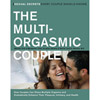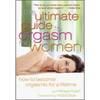Guide Me to Orgasm
I would recommend this book to others also experiencing orgasm difficulties. This is a detailed and smartly written guide to better understanding what it takes to become fully aroused. If you are open to it, this book could really make a difference.
Published:
Pros
Well written, in-depth, fun, self exploratory exercises
Cons
None-try it!
This product was provided at a discounted price in exchange for an unbiased review. This review is in compliance with the
FTC guidelines.
EdenFantasys Review Program
- Get Free Toys
- Enjoy Special Deals
Comments
Subscribe to comments
-
 Thanks for sharing.
Thanks for sharing. -
 Thanks for the review
Thanks for the review -
 Thanks so much for the review and photos
Thanks so much for the review and photos -
 Thank you for your review
Thank you for your review -
 ty for the review
ty for the review -
 Great review, thanks.
Great review, thanks. -
 Thanks for reviewing this. I was waiting for one to come up.
Thanks for reviewing this. I was waiting for one to come up. -
 Great job.
Great job. -
 nice review
nice review
Forum
No discussions yet.
- See all discussions
Thank you for viewing The elusive orgasm – book discontinued review page!











